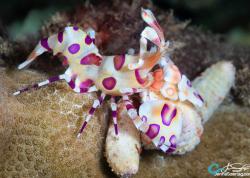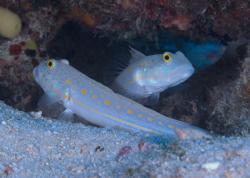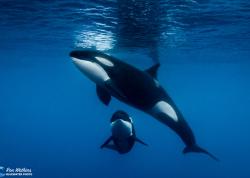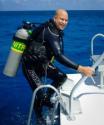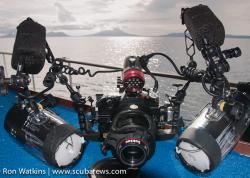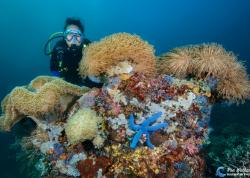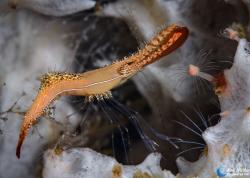Face-to-Face with Killer Whales
A Killer Welcome to the Galapagos
Besides my love of teaching others underwater photography, my favorite part of leading Bluewater Photo Workshops is that I get to travel to the best dive locations in the world and share new adventures with others. Every trip I enjoy making new friends, but on my last trip, our diverse group of 15 divers from Taiwan, England, New Zealand, Ukraine, Germany and the US got to experience something so rare and special that it will forever bond us together. On the third morning of our June 2016 Galapagos trip we awoke to the majestic sight of the rising sun over the towering Darwin’s Arch. Darwin Island, along with Wolf Island, are two of the main draws of this special 10 day diving and land tour through the Galapagos archipelago that Bluewater Photo had organized. It was a dream trip for all of us and nearly everyone’s first visit to the Ecuadorian treasure and UNESCO (United Nations Educational, Scientific and Cultural Organization) World Heritage site.
As everyone was sipping their first cup of coffee and doing last minute camera prep in anticipation of the 6:30 AM dive briefing, we all heard a scream of “ORCAS” and rushed to the bow of the Galapagos Master with cameras in hand. We first saw one, then 2, then 5 fins surface as we zoomed in on this rare sighting of a transient pod of orcas (Orcinus orca) in the Galapagos. They swam around the bow of the boat and then headed towards the arch. The crew readied two pangas and we raced towards them to get some better photo opportunites, but shortly after our departure the orcas disappeared. Just 2 weeks prior, on the second of four Bluewater Galapagos trips in 2016, they had also seen Orcas in the distance but were unable to get very close to them, so we all felt very fortunate to have at least seen them.
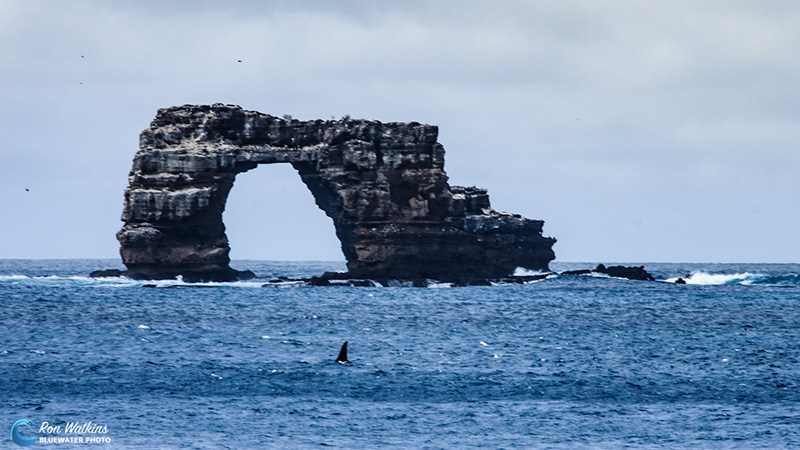
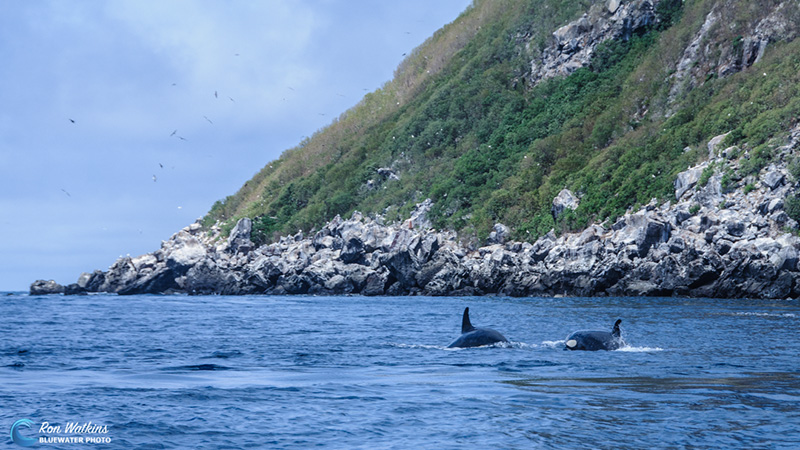
Return Visit by the Pod
The orcas made another brief appearance escorting us to our dive site, but then again disappeared. After diving in the strong current at Darwin’s Arch with lots of schooling fish but only a few hammerhead sharks, we returned to the boat to have breakfast and relax during a short surface interval. The dive master told us that because of the killer whales are in the area, the larger sharks, sea lions, turtles and rays are probably seeking shelter in protected areas or are avoiding the exposed area of the arch. As we were about to sit down to breakfast, another cry of “ORCAS” rang out and we all scrambled back to the pangas with cameras in hand.
We watched and photographed the pod from the pangas for several minutes and then observed the large male surface in the distance with what appeared to be a large sea turtle in its mouth and thrash about before diving down. We discussed whether it was just a play toy or a meal, but after we observed an oily slick near where the orca had surfaced, we guessed it was the latter. Despite having up to 4” teeth and often being referred to as killer whales, these marine mammals are actually the largest of the oceanic dolphin family. They may have gotten their deceptively dangerous name from a mistranslation of their Spanish name “asesina de ballenas”, which literally means “killer of whales” because they often feast on whales. But after witnessing the raw power of these animals, it was evident that they are at the top of the food chain in the ocean.
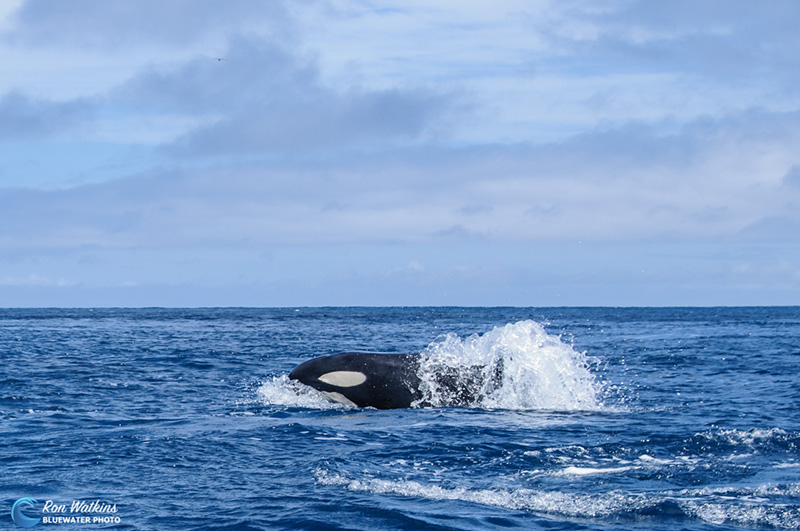
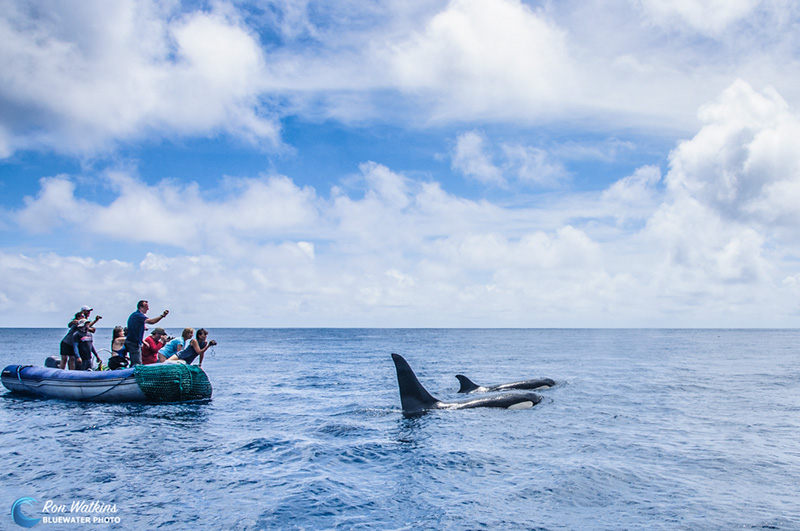
The orcas then closed in on our boats and proceeded to engage in what appeared to be social activity. We spent several minutes photographing them surface a few feet from the boat and jump out of the water, followed by two magnificent tail slaps that got a roar of excitement from everyone. At this point, I decided I was going in the water to photograph the orcas and after a brief negotiation with the dive masters, our panga headed back to the main ship so we could quickly gather our gear. I removed my strobes, grabbed my mask, snorkel and fins and advised the others to do the same. We were quickly back in the panga and racing out to where the orcas were still entertaining the other boats.
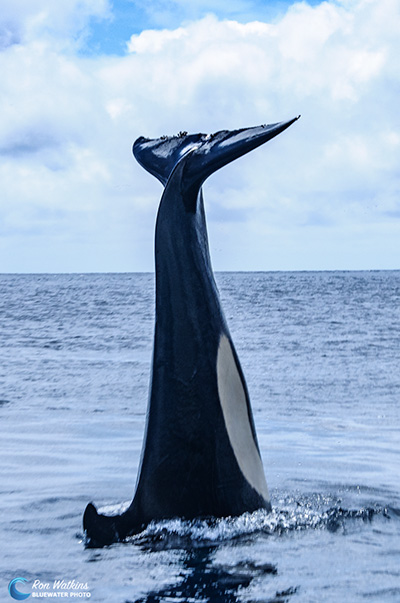
Entering the Water with Orcas
After a brief discussion of whether it was safe or not to enter the water, I quietly slipped in alone as the others looked on in disbelief from the security of the panga. The pod of 5 orcas was a short distance in front of me and slowly approached my position. I took a test shot, looked at the histograms and made a few minor camera adjustments. I then looked up to see the large male quickly closing in on me as if to protect the other three females and calf from this strange creature and make sure that I was not a threat. He came within 8-10 feet of me and slowly changed course to pass just below as I turned around and started swimming with him until I could no longer keep up. With a rush of adrenaline, I popped up and swam toward the boat and quickly handed up my camera. Immediately, the group started quizzing me about if they were aggressive and what it was like, but with my eyes wide-open and evident state of euphoria, I think they already knew the answer. As I explained to them the thrill of the interaction, I hit the display on my camera and quickly showed them a few images I had captured, which elicited screams of excitement as they grabbed their fins and masks. Evidently, the fear of a photographer missing a rare photo opportunity is much greater than the fear of getting in the water with the ocean's most powerful predator.
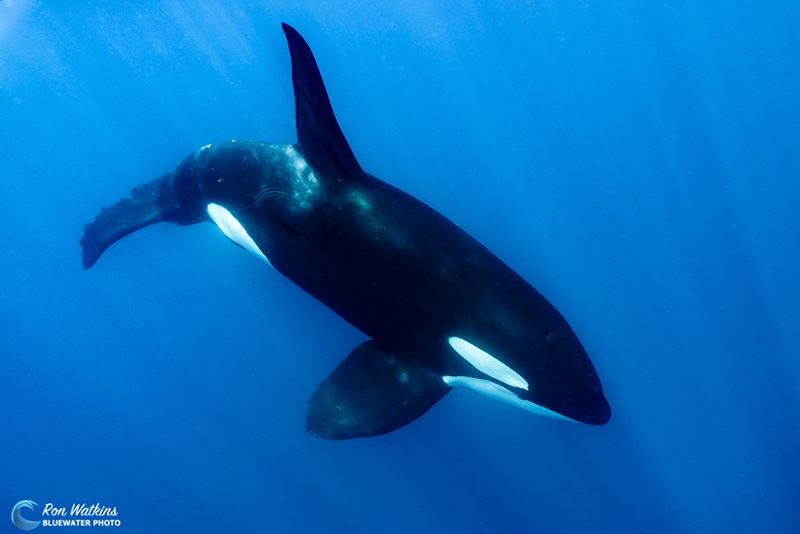
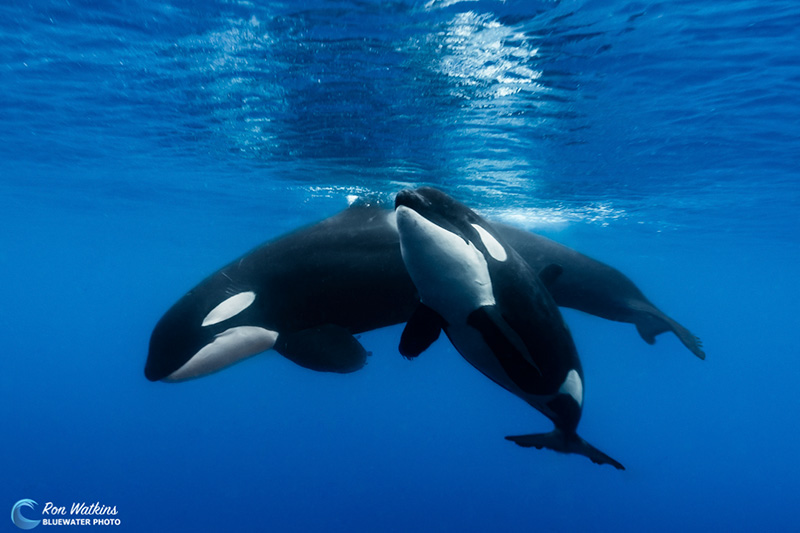
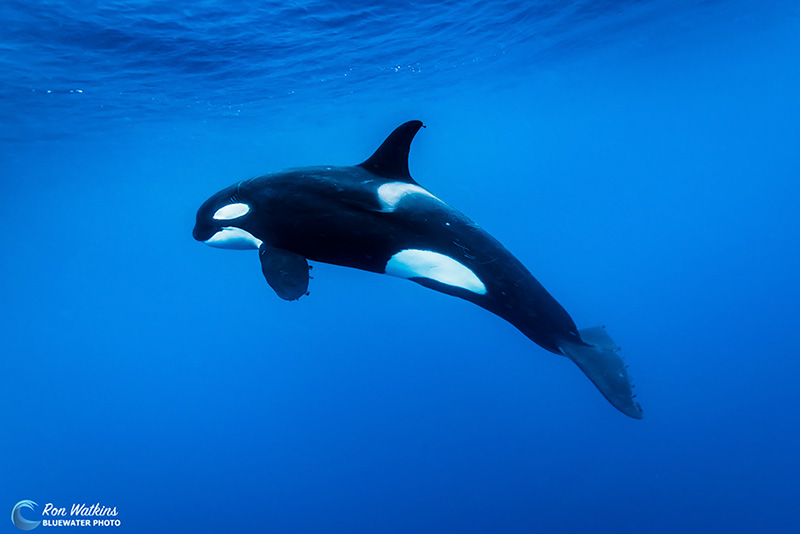
On the second pass I was slowly joined by a few of the others, and eventually everyone in the boat joined in the fun. After seeing us repeatedly swim with the pod and hearing our screams (of joy), the other boat raced back to the main ship and returned for a swim with the orcas. Over a period of 40 minutes, the playful pod of killer whales interacted with us in the water while we took pictures and video, but they eventually grew tired and moved on. The following day, while surfacing from a dive on Darwin’s Arch, some of our group were treated to a repeat performance by the orcas.
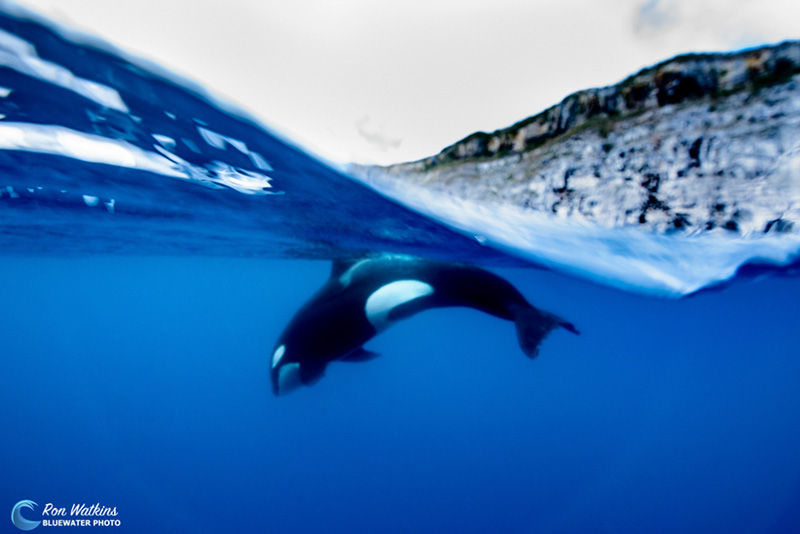
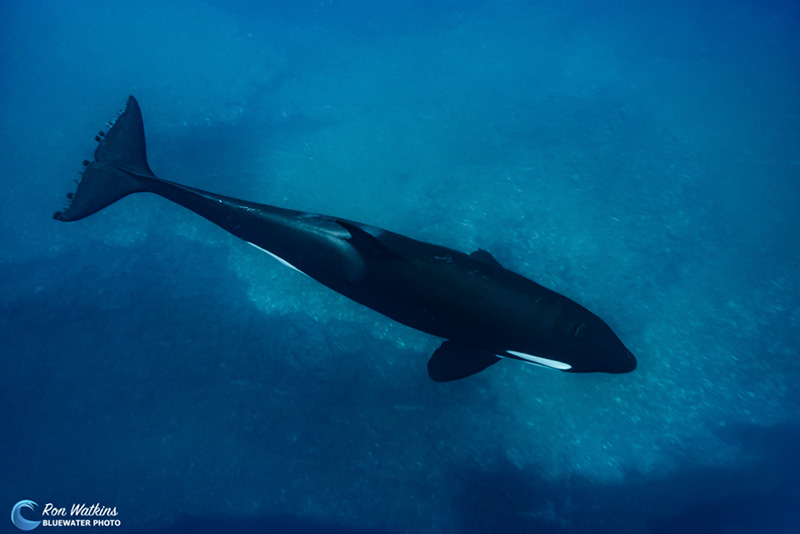
Reflections on a Once in a Lifetime Experience
After our interactions with the orcas, we were all as giddy as school kids and couldn’t stop talking about what each of us had experienced and just how fortunate we were to see orcas in the wild – the way they are supposed to be seen. We all came to the Galapagos to experience the raw beauty of nature, but none of us expected an interaction of a lifetime. For the next several nights, the workshop photo reviews were full of orca pictures and videos and some people became very emotional when reflecting on what it meant to them. For me, it truly was a new high point in my aquatic life and I feel extremely lucky that the orcas allowed us to interact with them. But most of all, it was being able to share this chance encounter with 15 people from various walks of life who now share an everlasting bond. I will never forget how terrific I felt when one of the Taiwanese divers, Albert, approached me and confided, “It has been 22 years of diving for me and it is the first time I have spotted wild orcas. If you didn’t jump into the water, I would not have done so myself alone. Thank you, so much. Great to share this experience with you.”

Learn More about Ron's Camera Gear
Read the full feature Inside the Camera Bag with Ron Watkins to learn more about his underwater camera gear.
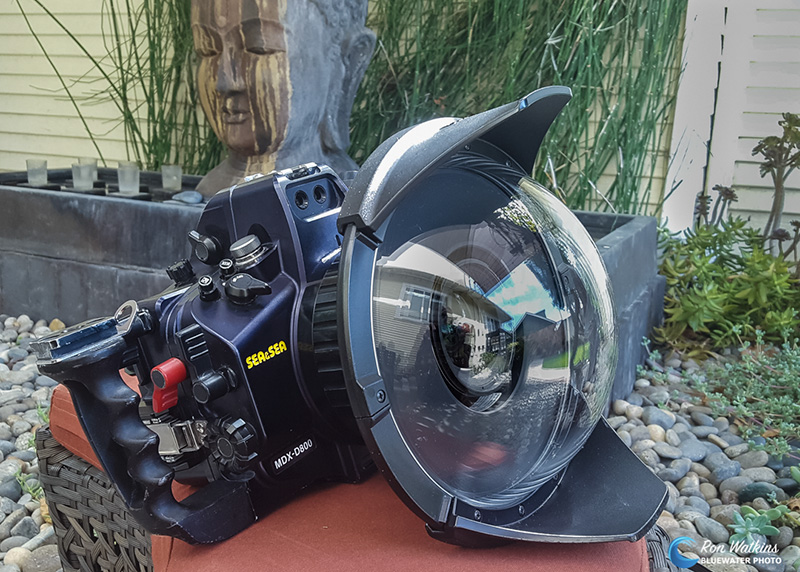
Nikon D800 DSLR
Nikkor 16-35mm Lens
Sea&Sea MDX-D800 Underwater Housing
Sea&Sea 8" Fisheye Dome Port
Vivid Leak Sentinel Vacuum System
Sea&Sea 180 degree Viewfinder
Learn More About Orcas
We discuss the range and habitat, diet, types of orcas, conservation and more in our marine life article Facts About Orcas.
Swim with Wild Orcas
Join an orca expedition in Norway to enjoy the thrill of observing orcas in their wild habitat. Arctic conditions are well worth the unforgettable experience of witnessing the behaviors of up to 60 orcas and humpback whales underwater. Snorkel gear and drysuit rentals are included!
Join Bluewater Photo for more Big Animal Encounters & Workshops
Our trips, whether an expedition or photo workshop, are hosted by underwater photo experts and offer personalized photo instruction to make sure you come home with great shots.
 Ron Watkins
Ron Watkins
Photo Pro, Photographer of Orcas
- Dumaguete, Philippines Photo Workshop (macro, reefs, whale sharks)
 Scott Gietler
Scott Gietler
Publisher Underwater Photography Guide, owner Bluewater Photo & Travel
- Galapagos Liveaboard Photo Workshops April 2017
- French Polynesia Master for Sharks and Grouper Spawning
 Brent Durand
Brent Durand
Editor-in-Chief, Underwater Photography Guide
- La Paz, Mexico for Whale Sharks & Sea Lions
- Sir Lanka Liveaboard Expedition for Whales & Dolphins
View all of our Underwater Photo Trips and Workshops.
RECOMMENDED ARTICLES
SUPPORT THE UNDERWATER PHOTOGRAPHY GUIDE:
The Best Service & Prices on u/w Photo Gear
 Visit Bluewater Photo & Video for all your underwater photography and video gear. Click, or call the team at (310) 633-5052 for expert advice!
Visit Bluewater Photo & Video for all your underwater photography and video gear. Click, or call the team at (310) 633-5052 for expert advice!
The Best Pricing, Service & Expert Advice to Book your Dive Trips
 Bluewater Travel is your full-service scuba travel agency. Let our expert advisers plan and book your next dive vacation. Run by divers, for divers.
Bluewater Travel is your full-service scuba travel agency. Let our expert advisers plan and book your next dive vacation. Run by divers, for divers.




